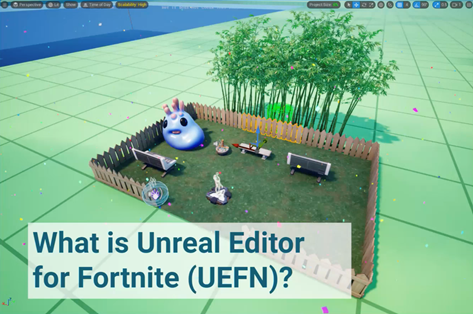18 April 2024
Getting started with Epic's Unreal Editor for Fortnite - Interactive 3D TC Meeting

This is a summary of an Interactive 3D Community meeting discussing new resources for teachers and students wanting to get started with UEFN
Introducing Interactive 3D Learning Resources for Schools
Flip Computing, in collaboration with CAS, has developed an exciting set of interactive 3D learning resources designed to engage students in the world of game development and 3D modelling. These free resources aim to provide an accessible entry point into the realm of Unreal Engine, Epic Games' powerful game engine which is free software.
User-Friendly Design
The resources have been meticulously crafted with a strong emphasis on user-friendliness. They feature numbered steps and checklists for "try it out" tasks to ensure a smooth learning experience. One of the standout features is the bridge from the popular Scratch programming language to Unreal Engine concepts. This approach leverages students' existing knowledge, making the transition to 3D modelling less daunting and more intuitive.
Engaging Hands-On Projects
The resources include interactive projects that allow students to create their own 3D worlds and games. One such project involves decorating a virtual base with flowers collected from a nearby garden, complete with visual effects and scenery. These hands-on activities not only teach coding and design skills but also foster creativity and problem-solving abilities.
Aligning with the National Curriculum
While these resources may seem like an additional component, they align closely with the national curriculum for computing. By incorporating 3D modelling and game development, students can learn fundamental computing concepts in an engaging and practical manner, making the subject more accessible and appealing to a wider range of learners.
These are how these resources link to the national curriculum:
- Use two or more programming languages, at least one of which is textual, to solve a variety of computational problems.
- Design, use and evaluate computational abstractions that model the state and behaviour of real-world problems and physical systems.
- Undertake creative projects that involve selecting, using, and combining multiple applications.
- Create, reuse, revise and repurpose digital artefacts.
- Design, use and evaluate computational abstractions that model the state and behaviour of real-world problems and physical systems.
Overcoming Barriers to Implementation
Despite the excitement surrounding these resources, there are potential barriers to their implementation in schools. However, the resources have been designed to be flexible, allowing for integration into enrichment days, after-school clubs, or even gradual incorporation into the existing curriculum. Flip Computing and CAS are committed to supporting educators in this endeavour, providing guidance and resources to facilitate the adoption of these cutting-edge tools in the classroom.
As the world continues to evolve, equipping students with skills in emerging technologies like 3D modelling and game development becomes increasingly important. These interactive 3D learning resources represent a significant step towards preparing the next generation for the future while making computing education more engaging and accessible.



